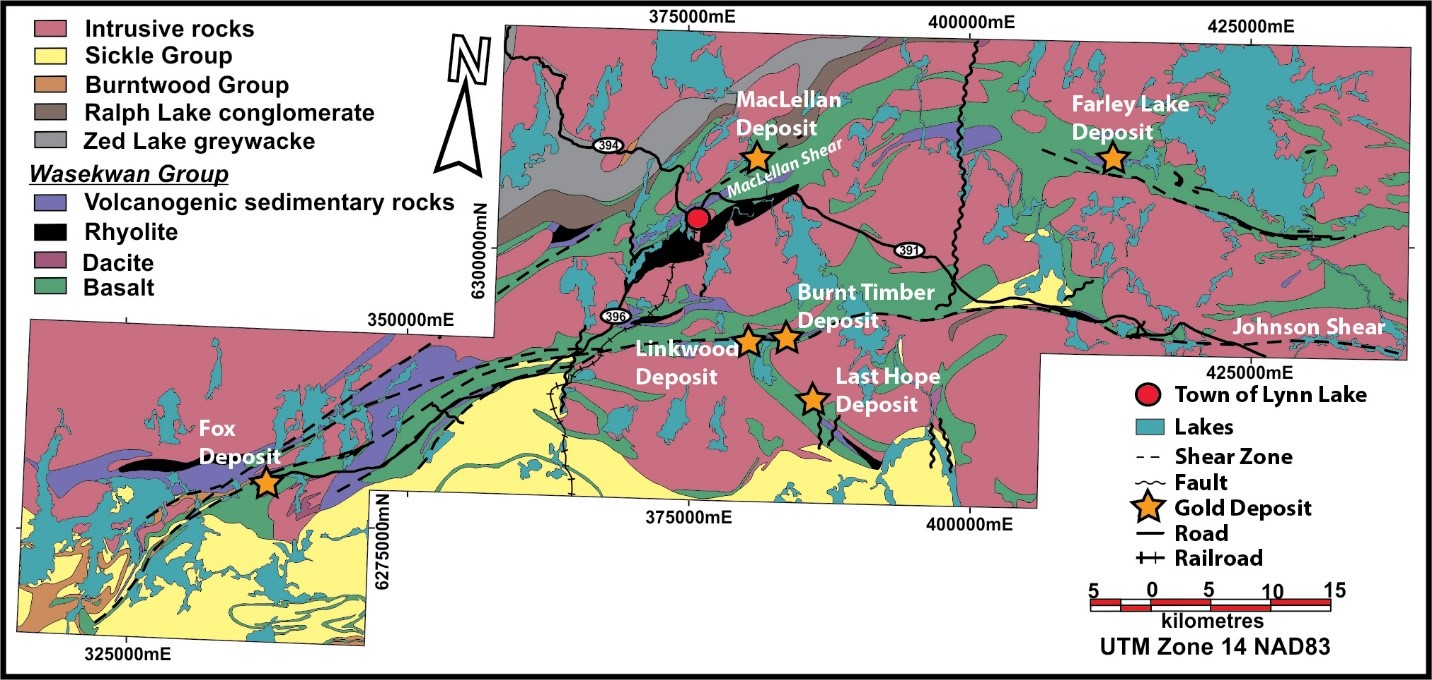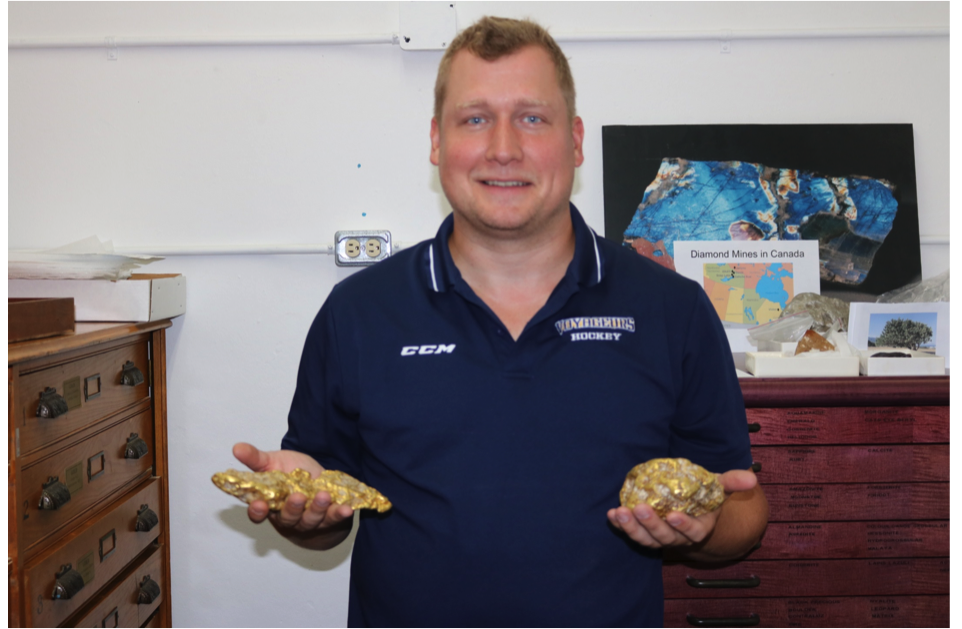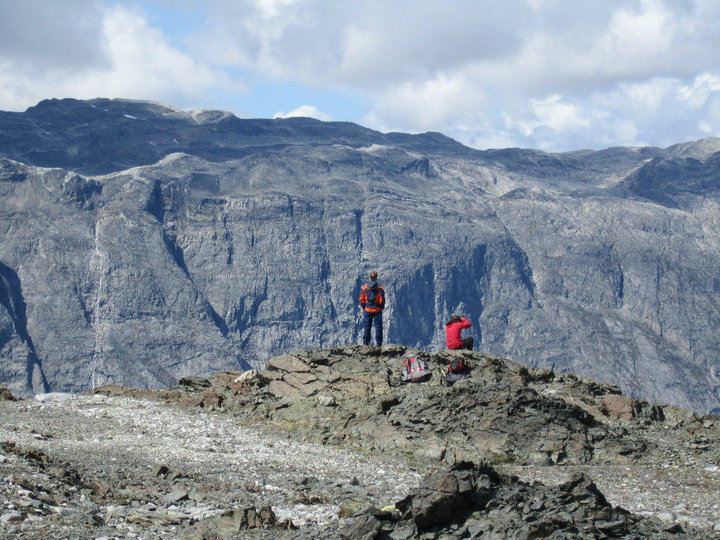Mon
12 MarResearcher Profile: Evan Hastie

This map outlines gold deposits associated with major structures in the Lynn Lake greenstone belt where Evan conducted his research. Stars represent gold deposit locations and dashed lines represent major structures. (modified from Beaumont-Smith et al., 2006).
Evan Hastie, at the Harquail School of Earth Sciences at Laurentian University, likes to think of himself as a detective. As an economic geologist, he has to take many sub-disciplines of geology and combine them in order to answer questions about ore-forming processes and ore deposits. Similar to a crime scene, the detective is the one who pieces all the evidence together.
Growing up in Hanover, Ontario, Evan spent most of his time outdoors. He always wanted to do something research-based but had a passion for travel, camping, and enjoying nature. Geology was his gateway to following his passion while “still being a nerd back in the lab”.
Evan conducted his research for this publication while he was an M.Sc. student at the University of Windsor and an employee of Carlisle Goldfields Ltd. The three main questions he was seeking answers to when it came to gold deposits in Northern Manitoba were:
- Are gold deposits formed by syngenetic or epigenetic processes? In other words, do gold deposits form at the same time that the rocks are deposited, or does this process occur after the rocks are formed?
- How do large-scale structures (like the famous San Andreas Fault in California) control the distribution of gold and the composition of rocks hosting gold?
- How do the Archean and Proterozoic Era compare in terms of gold endowment?
Highlights from the publication:
- Gold deposits that were studied were formed by epigenetic processes.
- Gold distribution in the Lynn Lake greenstone belt is controlled by major structures and shear zones.
- The Proterozoic Era may be more endowed with respect to gold than previously thought.
Evans research now focuses on gold deposits of Archean age (4 to 2.5 billion years ago) in the Swayze greenstone belt of northern Ontario. The Archean Era is a significant period for gold deposits worldwide.
You can watch out for more research from Evan focusing on the following research topics:
- Gold transport mechanisms and gold remobilization (i.e., studying how gold moves in rocks and how it gets concentrated to form gold deposits).
- Geochemistry of Archean gold-forming processes (i.e., can we use the chemistry of rocks to identify gold-forming processes?).
- Apparent gold endowment disparity between Archean terranes (i.e., why do some areas have more gold than others if they have the same geology?).
Read the full publication here

Evan holding two large gold nuggets from the Royal Ontario Museum collection during a collaboration visit.

Overlooking fjord to adjacent mountain range in Greenland.





